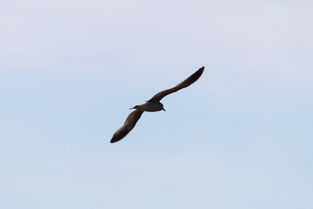Introduction:
Winter fishing, often shunned by many anglers, can be a rewarding experience, especially when it comes to catching the majestic carp. The cold months present unique challenges and opportunities that require a different approach to fishing. In this article, we delve into the art of winter carp fishing, focusing on the essential techniques to help you hook that elusive big one.
Understanding Winter Carp Behavior:
Carp are known for their resilience and adaptability, but their behavior changes significantly during the colder months. Here's what you need to know:
Water Temperature: Carp become less active as water temperatures drop. They tend to seek out warmer waters, which can be found in deeper parts of the lake or river, or even in sunken structures.
Feeding Patterns: In winter, carp's feeding patterns slow down. They are less likely to chase down food and more likely to feed on whatever they can find close to their resting spots.
Habitat: Carp will often move to slower, deeper waters during winter. Look for areas with plenty of cover, such as reeds, lily pads, or submerged trees.
Essential Winter Carp Fishing Techniques:

Choose the Right Equipment:
- Reel: A quality, smooth-running reel is crucial for winter fishing. Look for models with good drag systems to handle the increased line tension.
- Rod: A strong, flexible rod is ideal for winter carp fishing. A 12-15 ft rod with a medium to heavy action will allow you to cast and set the hook effectively.
- Line: Use a line that is strong enough to handle the increased weight of the carp and the cold conditions. 10-15 lb test monofilament or braided line is generally recommended.
Lure Selection:
- Natural Baits: In winter, natural baits like maggots, worms, or corn can be highly effective. These baits mimic the carp's natural diet and are less likely to be ignored.
- Artificial Lures: Soft plastics, such as grubs or worms, can also be effective. Choose colors that mimic natural prey, like brown, black, or green.
Presenting the Bait:
- Drop Shot Technique: This technique involves dropping a baited hook vertically to the bottom and then slowly retrieving it. It's particularly effective in deeper waters where carp may be hiding.
- Carrot Rig: This rig involves a piece of bread or a similar bait suspended just above the bottom. It's a great way to attract carp that are feeding on the bottom.
Timing and Location:
- Morning and Afternoon: Carp are often more active during the warmer parts of the day, so try to fish during the morning or late afternoon.
- Deeper Waters: As mentioned earlier, carp tend to move to deeper waters in winter. Focus your efforts on these areas, especially if you're using natural baits.
Patience and Persistence:
Winter fishing can be slow, and it's easy to get discouraged. Be patient and persistent. The rewards can be great, especially if you manage to catch a big carp during the colder months.
Conclusion:
Winter carp fishing requires a different set of skills and patience, but it can be a highly rewarding experience. By understanding the behavior of carp during the colder months and employing the right techniques, you can increase your chances of hooking that big one. Remember to dress warmly, stay hydrated, and enjoy the serene beauty of winter fishing. With the right approach, you'll find that winter can be one of the most enjoyable times to fish for carp.












